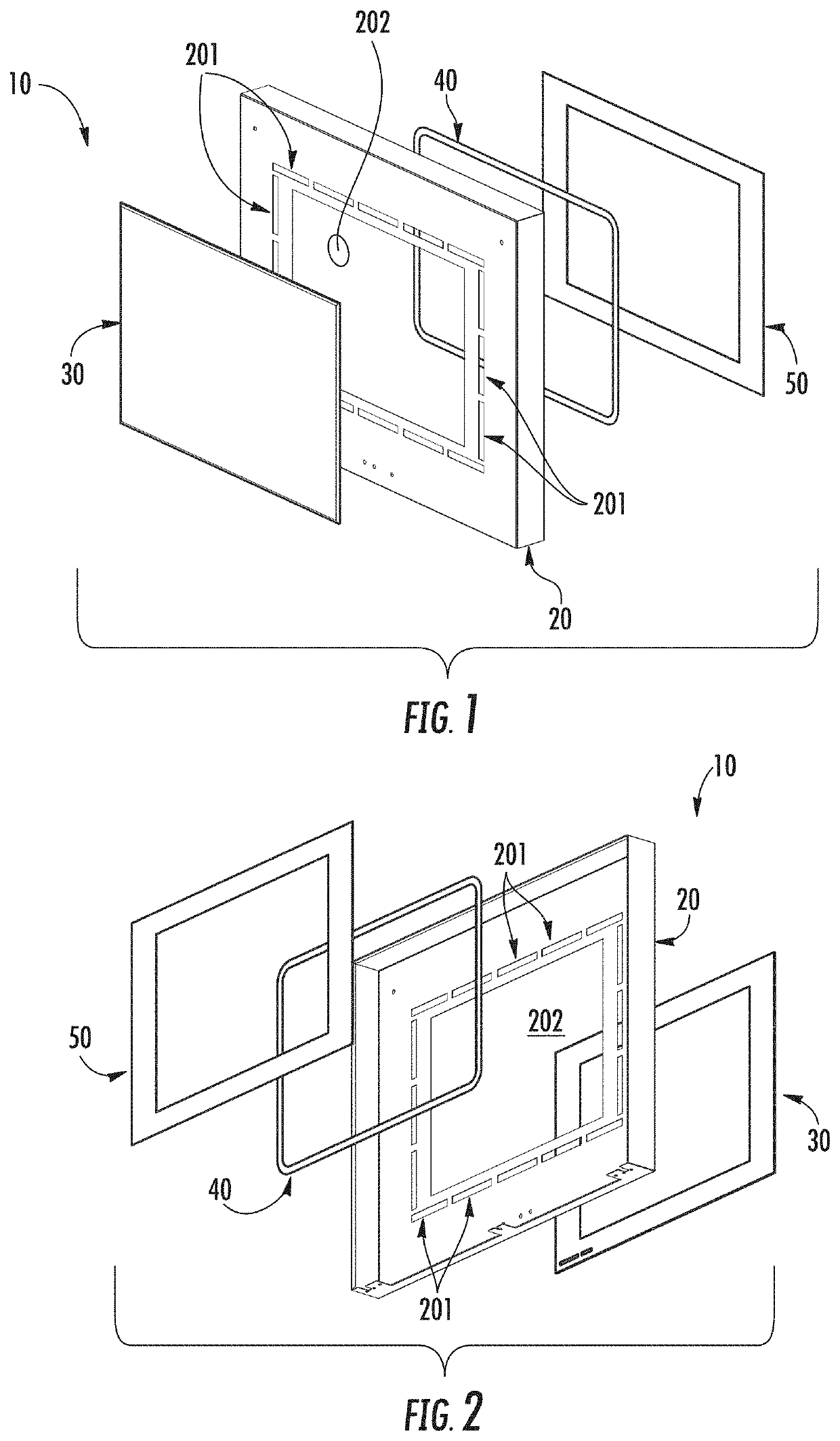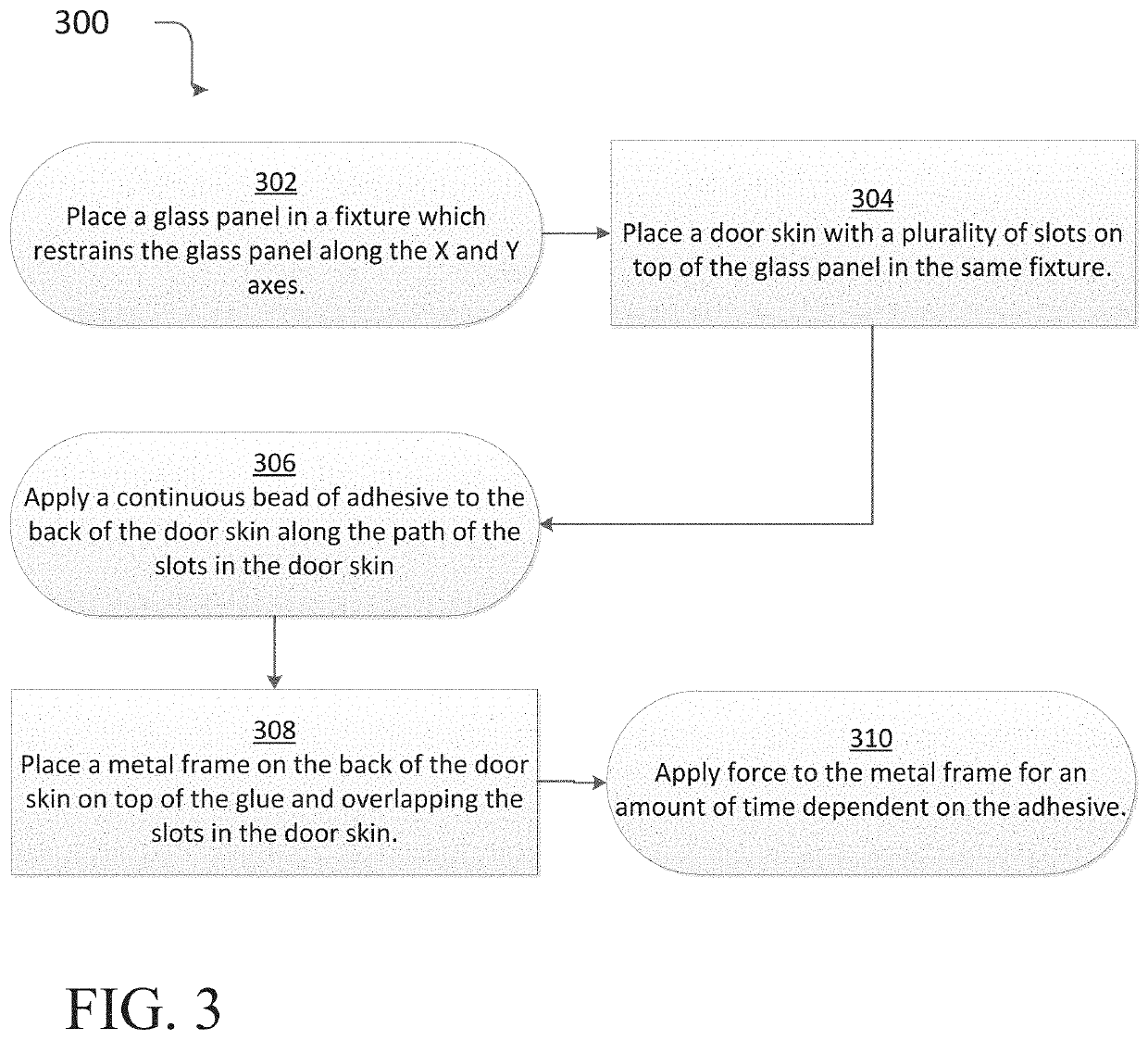Glass on outside of range door
a technology for range doors and glass, which is applied in the field of improvement of appliance door construction, can solve the problems of increased heat loss, gap between the door skin and the glass, and insufficient traditional methods, and achieve the effect of greater structural strength
- Summary
- Abstract
- Description
- Claims
- Application Information
AI Technical Summary
Benefits of technology
Problems solved by technology
Method used
Image
Examples
example procedures
[0026]
[0027]The following discussion describes techniques for constructing an appliance door panel with a metal-to-metal-to-glass bond. The procedures are shown as a set of blocks that specify operations to be performed by one or more persons or one or more devices and are not necessarily limited to the orders shown for performing the operations by the respective blocks. In portions of the following discussion, reference will be made to FIGS. 1 and 2 and respective reference numbers.
[0028]FIG. 3 depicts a procedure 300 in an example implementation in which an appliance door panel with a metal-to-metal-to-glass bond is constructed.
[0029]At 302 a glass panel (30) of similar or identical size to a door skin viewing window (202) is placed in a fixture which restrains it along the X and Y axes.
[0030]At 304 a door skin (10) having a plurality of perforated or cut slots (201) is placed on top of the glass panel in the same fixture, the fixture constraining both the glass panel and the door...
PUM
| Property | Measurement | Unit |
|---|---|---|
| adhesive | aaaaa | aaaaa |
| thickness | aaaaa | aaaaa |
| heat loss | aaaaa | aaaaa |
Abstract
Description
Claims
Application Information
 Login to View More
Login to View More - R&D
- Intellectual Property
- Life Sciences
- Materials
- Tech Scout
- Unparalleled Data Quality
- Higher Quality Content
- 60% Fewer Hallucinations
Browse by: Latest US Patents, China's latest patents, Technical Efficacy Thesaurus, Application Domain, Technology Topic, Popular Technical Reports.
© 2025 PatSnap. All rights reserved.Legal|Privacy policy|Modern Slavery Act Transparency Statement|Sitemap|About US| Contact US: help@patsnap.com


